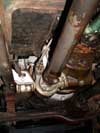 Click for larger image
Click for larger image
 Click for larger image
Click for larger image |
 Click for larger image
Click for larger image |
 Click for larger image
Click for larger image |
 Click for larger image
Click for larger image |
 Click for larger image
Click for larger image |
 Click for larger image
Click for larger image |
 Power-Wagon Pulleys
Power-Wagon PulleysClick for larger image |
 Click for larger image
Click for larger image |
 Click for larger image
Click for larger image |
 Click for larger image
Click for larger image |
 Click for larger image
Click for larger image |
 Click for larger image
Click for larger image |
 Todd Somers Photo
Todd Somers PhotoClick for larger image |
 Click for larger image
Click for larger image |
 Ford Pulleys
Ford PulleysClick for larger image |
 Ford Jeep Power-Wagon Pulleys
Ford Jeep Power-Wagon PulleysClick for larger image |
 Ford Jeep Power-Wagon Pulleys
Ford Jeep Power-Wagon PulleysClick for larger image |
Copyright © 2004- - Clint Dixon
All Rights Reserved